1. Please provide your name
2. Please provide your number
3. Please provide your inquiry
Start Chatting in 3 easy steps
No registration required.
No registration required.
365572 ads
We are one of the largest free online selling communities with thousands of active sellers.
303619991 views
Do you have something to sell? Your next sale might be just a few clicks away.
4.7 stars
Based from 898 member feedbacks. We value your suggestions and use it.
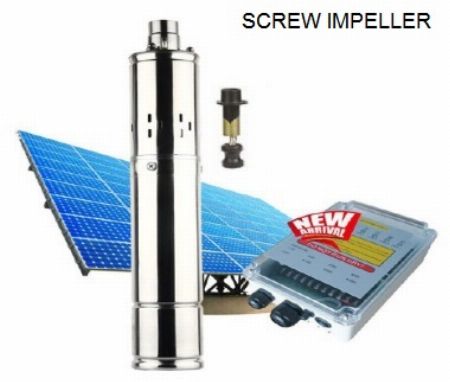
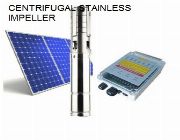
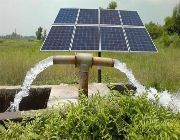
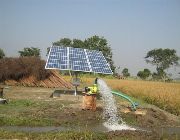
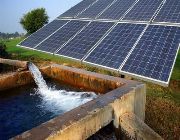

model:
4BYS2.1/50-D24/270 P41,552
4BYS3/60-D36/500 P53,424
4BYS3.6/80-D48/750 P57,134
CENTRIFUGAL (STAINLESS) IMPELLER
4BYSC10/90-D72/1300 P81,991
4BYSC15/40-D72/1000 P76,983
4BYSC15/70-D72/1300 P81,991
definition:
A solar-powered pump is a pump running on electricity generated by photovoltaic panels or the radiated thermal energy available from collected sunlight as opposed to grid electricity or diesel run water pumps.[1] The operation of solar powered pumps is more economical mainly due to the lower operation and maintenance costs and has less environmental impact than pumps powered by an internal combustion engine (ICE). Solar pumps are useful where grid electricity is unavailable and alternative sources (in particular wind) do not provide sufficient energy.
A photovoltaic solar powered pump system has three parts:
• solar panels.
• the controller
• the pump
The solar panels make up most (up to 80%) of the systems cost. [4][citation needed] The size of the PV-system is directly dependent on the size of the pump, the amount of water that is required (m³/d) and the solar irradiance available.
The purpose of the controller is twofold. Firstly, it matches the output power that the pump receives with the input power available from the solar panels. Secondly, a controller usually provides a low voltage protection, whereby the system is switched off, if the voltage is too low or too high for the operating voltage range of the pump. This increases the lifetime of the pump thus reducing the need for maintenance. Other ancillary functions include automatically shutting down the system when water source level is low or when the storage tank is full, regulating water output pressure, blending power input between the solar panels and an alternate power source such as the grid or a petrol generator, and remotely monitoring and managing the system through an online portal offered as a cloud service by the manufacturer.
Voltage of the solar pump motors can be AC (alternating current) or DC (direct current). Direct current motors are used for small to medium applications up to about 4 kW rating, and are suitable for applications such as garden fountains, landscaping, drinking water for livestock, or small irrigation projects. Since DC systems tend to have overall higher efficiency levels than AC pumps of a similar size, the costs are reduced as smaller solar panels can be used.
Finally, if an alternating current solar pump is used, an inverter is necessary that changes the direct current from the solar panels into alternating current for the pump. The supported power range of inverters extends from 0.15 to 55 kW and can be used for larger irrigation systems. However, the panel and inverters must be sized accordingly to accommodate the inrush characteristic of an AC motor. To aid in proper sizing, leading manufacturers provide proprietary sizing software tested by third party certifying companies. The sizing software may include the projected monthly water output which varies due to seasonal change in insolation.
Water pumping[edit]
Solar powered water pumps can deliver drinking water as well as water for livestock or irrigation purposes.[1] Solar water pumps may be especially useful in small scale or community based irrigation, as large scale irrigation requires large volumes of water that in turn require a large solar PV array.[2] As the water may only be required during some parts of the year, a large PV array would provide excess energy that is not necessarily required, thus making the system inefficient.
Solar PV water pumping systems are used for irrigation and drinking water in India. The majority of the pumps are fitted with a 2000 watt - 3,700 watt motor that receives energy from a 4,800 Wp PV array. The 5hp systems can deliver about 124,000 liters of water/day from a total of 50 meters setoff head and 70 meters dynamic head. By 30 August 2016, a total of 1,20,000 solar PV water pumping systems have been installed in India and many other places around the world. [3] Energy storage in the form of water storage is better than energy storage in the form of batteries for solar water pumps because there is no intermediary transformation of one form of energy to another. The most common pump mechanics used are centrifugal pumps, multistage pumps, borehole pumps, and helical pumps. Important scientific concepts of fluid dynamics like pressure vs. head, pump heads, pump curves, system curves, and net suction head are really important for the successful deployment and design of solar powered pumps.[
message us your inquiries.
(0905) 689-7266 globe/tm
(0908) 903-1999 smart/tnt
This seller has been a member since: May. 28, 2019
Member Location:
Total Classifieds: 1752
Why seller feedback is important?
Transact with most credible & reputable sellers
Know the seller you are going to deal with
Claim warranty long after purchasing the item
Warn you and other buyers against scams
Motivates sellers to provide good service